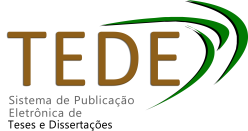| Compartilhamento |


|
Use este identificador para citar ou linkar para este item:
http://www.bdtd.ueg.br/handle/tede/1801| Tipo do documento: | Dissertação |
| Título: | Desempenho de leitões na maternidade submetidos a diferentes fontes de aquecimento |
| Título(s) alternativo(s): | Performance of piglets in the maternity ward subjected to different heating sources |
| Autor: | Silva, Marianne Pereira  |
| Primeiro orientador: | Ferro, Diogo Alves da Costa |
| Primeiro coorientador: | Santos, Bruno Moreira dos |
| Segundo coorientador: | Ferro, Rafael Alves da Costa |
| Primeiro membro da banca: | Silva, Bruna Paula Alves da |
| Resumo: | O maior desafio da suinocultura é disponibilizar conforto térmico para matrizes e leitões, sendo que estes ficam no mesmo ambiente. A zona de conforto térmico para matrizes é de 10 a 15 ºC e para leitões é de 30 a 32 ºC, sendo reduzida gradativamente ao longo das semanas. Para que matrizes e leitões fiquem no mesmo ambiente é utilizado escamoteador com auxílio de uma fonte de calor, deste modo é possível controlar a temperatura e ofertar ambiente com aquecimento artificial para a leitegada. Objetivou-se avaliar com este projeto diferentes fontes de aquecimento para os leitões na maternidade. O experimento foi realizado em uma granja suinícola, em Planaltina, Goiás, Brasil. Foram avaliados três lotes de forma simultânea na maternidade, alojando dez leitões para cada lote, com genética DB 90, com cinco repetições. O escamoteador 1 era aquecido com lâmpada infravermelha 250w 220v-1, o escamoteador 2 era aquecido com uma lâmpada incandescente de 150w 220v-1 e o escamoteador 3 era aquecido com uma lâmpada infravermelho/incandescente de 220w 220v-1. Avaliou a umidade relativa do ar, temperatura ambiente ou de bulbo seco, temperatura de bulbo úmido, temperatura de ponto de orvalho, temperatura de globo negro e temperatura de escamoteadores com a utilização equipamento Medidor de Stress Térmico (IBUTG) AK 887®. Também avaliou-se parâmetros fisiológicos como a frequência respiratória e a temperatura de superfície de pele (nuca, paleta e pernil) com a utilização de termômetro laser digital e comportamento por meio de observações visuais. Os dados foram avaliados através da análise de variância, adotando-se o teste F e teste de Tukey, ao nível de 5% de probabilidade. O peso inicial, peso final, ganho de peso diário, ITU e temperatura não apresentaram diferenças estatísticas. O ITGU houve diferenças estatísticas, demonstrando o maior valor para a fonte de calor com lâmpada infravermelho. Já a UR apresentou diferenças estatísticas. Para os parâmetros fisiológicos avaliados de temperatura de superfície corporal observou valores de nuca e paleta com diferenças estatísticas entre os tratamentos, e para pernil não houve diferenças. A FR também apresentou diferenças estatísticas entre as fontes de calor. Por fim, a frequência de comportamentos não houve diferenças estatísticas apenas nos comportamentos de beber água e de locomover fora do escamoteador, sendo que os demais houve diferenças estatísticas. Pode-se concluir que o microclima gerado pelas fontes de calor provindo das lâmpadas ultrapassou a faixa de conforto térmico que é exigido aos leitões. |
| Abstract: | The biggest challenge in pig farming is to provide thermal comfort for sows and piglets, which are in the same environment. The thermal comfort zone for sows is 10 to 15 ºC and for piglets is 30 to 32 ºC, being gradually reduced over the weeks. So that sows and piglets stay in the same environment, a creeper is used with the aid of a heat source, in this way it is possible to control the temperature and offer an environment with artificial heating for the litter. The aim of this project was to evaluate different sources of heating for piglets in the farrowing pen. The experiment was carried out in a pig farm, in Planaltina, Goiás, Brazil. Three lots were evaluated simultaneously in the maternity, housing ten piglets for each lot, with DB 90 genetic piglets, with five replications. The creeper 1 was heated with an infrared lamp 250w 220v-1, the creeper 2 was heated with an incandescent lamp of 150w 220v-1 and the creeper 3 was heated with an infrared/incandescent lamp of 220w 220v-1. He evaluated the relative humidity of the air, ambient or dry bulb temperature, wet bulb temperature, dew point temperature, black globe temperature and creeper temperature using Thermal Stress Meter (IBUTG) AK 887® equipment. Physiological parameters such as respiratory rate and skin surface temperature (nape, shoulder and leg) were also evaluated using a digital laser thermometer and behavior through visual observations. Data were evaluated through analysis of variance, adopting the F test and Tukey's test, at a 5% probability level. Initial weight, final weight, daily weight gain, UTI and temperature did not show statistical differences. The ITGU showed statistical differences, demonstrating the highest value for the heat source with an infrared lamp. The UR, on the other hand, presented statistical differences. For the evaluated physiological parameters of body surface temperature observed values for neck and shoulder with statistical differences between treatments, and for leg there were no differences. The FR also showed statistical differences between the heat sources. Finally, the frequency of behaviors there were no statistical differences only in the behaviors of drinking water and moving outside the creeper, and the others showed statistical differences. It can be concluded that the microclimate generated by the heat sources coming from the lamps exceeded the range of thermal comfort that is required for piglets. |
| Palavras-chave: | Ambiência Bem-estar animal Suinocultura Temperatura Produção animal Ambience Animal welfare Swine farming Temperature Animal production |
| Área(s) do CNPq: | CIENCIAS AGRARIAS |
| Idioma: | por |
| País: | Brasil |
| Instituição: | Universidade Estadual de Goiás |
| Sigla da instituição: | UEG |
| Departamento: | UEG ::Coordenação de Mestrado Profissional em Produção Animal e Forragicultura |
| Programa: | Programa de Pós-Graduação Stricto sensu em Produção Animal e Forragicultura |
| Citação: | SILVA, Marianne Pereira. Desempenho de leitões na maternidade submetidos a diferentes fontes de aquecimento. 2023. 49f. Dissertação (Programa de Pós-Graduação Stricto sensu em Produção Animal e Forragicultura) - Campus Oeste - Sede: São Luís de Montes Belos, Universidade Estadual de Goiás, São Luís de Montes Belos, GO. |
| Tipo de acesso: | Acesso Aberto |
| URI: | http://www.bdtd.ueg.br/handle/tede/1801 |
| Data de defesa: | 3-Abr-2023 |
| Aparece nas coleções: | Mestrado Profissional em Produção Animal e Forragicultura |
Arquivos associados a este item:
| Arquivo | Descrição | Tamanho | Formato | |
|---|---|---|---|---|
| MARIANNE PEREIRA SILVA.pdf | MARIANNE PEREIRA SILVA | 1,05 MB | Adobe PDF | Baixar/Abrir Pré-Visualizar |
| TERMO DE AUTORIZAÇÃO_MARIANNE PEREIRA SILVA.pdf | TERMO DE AUTORIZAÇÃO_MARIANNE PEREIRA SILVA | 431,5 kB | Adobe PDF | Baixar/Abrir Pré-Visualizar |
Os itens no repositório estão protegidos por copyright, com todos os direitos reservados, salvo quando é indicado o contrário.




